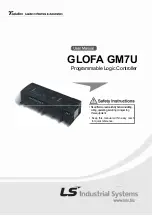
Technical Data | 3
Bosch Motorsport
Engine_Control_Unit_MS_3_Sport_GT3_Cup_Manual
9 / 24
Crankshaft trigger sensor
The software assumes a 36-2 teeth or a 60-2 teeth trigger wheel for proper operation. The
type can be choosen in the software Modas Sport. The crankwheel trigger sensor must be
an inductive type for default configuration. Bosch Motorsport recommends the use of in-
ductive speed sensor IA-C. The picture below shows the correct installation position.
tooth count
60 (-2)
diameter
> 100 mm
diameter
3.5 mm
gap depth
h1/2
air gap
0.8 ± 0.3 mm
wheel thickness > 5.0 mm
TDC to REF
free adjustable
gap width
3.30°
tooth width
2.70°
Description
Nominal Dimension
tooth count
36 (-2)
diameter
> 95.3 mm [3.750 in]
diameter
5.0 mm [0.197 in]
gap depth
h1/2
air gap
0.8 ± 0.3 mm
wheel thickness > 5.0 mm [0.197 in]
TDC to REF
free adjustable
gap width
5.55°
tooth width
4.45°
Description
Nominal Dimension
Illustration 6: Crankshaft wheel
Further requirements
– The Trigger sensor must be made of a ferromagnetic material.
– The Sensor wheel teeth must be sharp.
– The Reference mark is the second tooth after the gap.
3.4.2 Mounting of the Sensors
Procedure to find the right position for the crank and cam triggers:
1.
Rotate the engine to the precise position of TDC compression for cylinder #1.
2.
Rotate the engine (*) crankshaft degrees backwards.
3.
Adjust the position of the crank trigger wheel in reference to its inductive speed
sensor: the longitudinal axis of the sensor must point exactly towards the reference
mark (2nd falling edge after the gap).
4.
Adjust the position of the cam trigger in reference to its Hall Effect speed sensor: the
sensor must be about at the centre of the tooth.
5.
Turn the engine by 360 crankshaft degrees to reach the position of (*)° before TDC
exhaust for cylinder #1.
6.
Verify that the crank trigger reference mark is in alignment with the longitudinal axis
of the sensor (same as Step 3) and that the cam trigger tooth is at the opposite side
of its speed sensor.










































